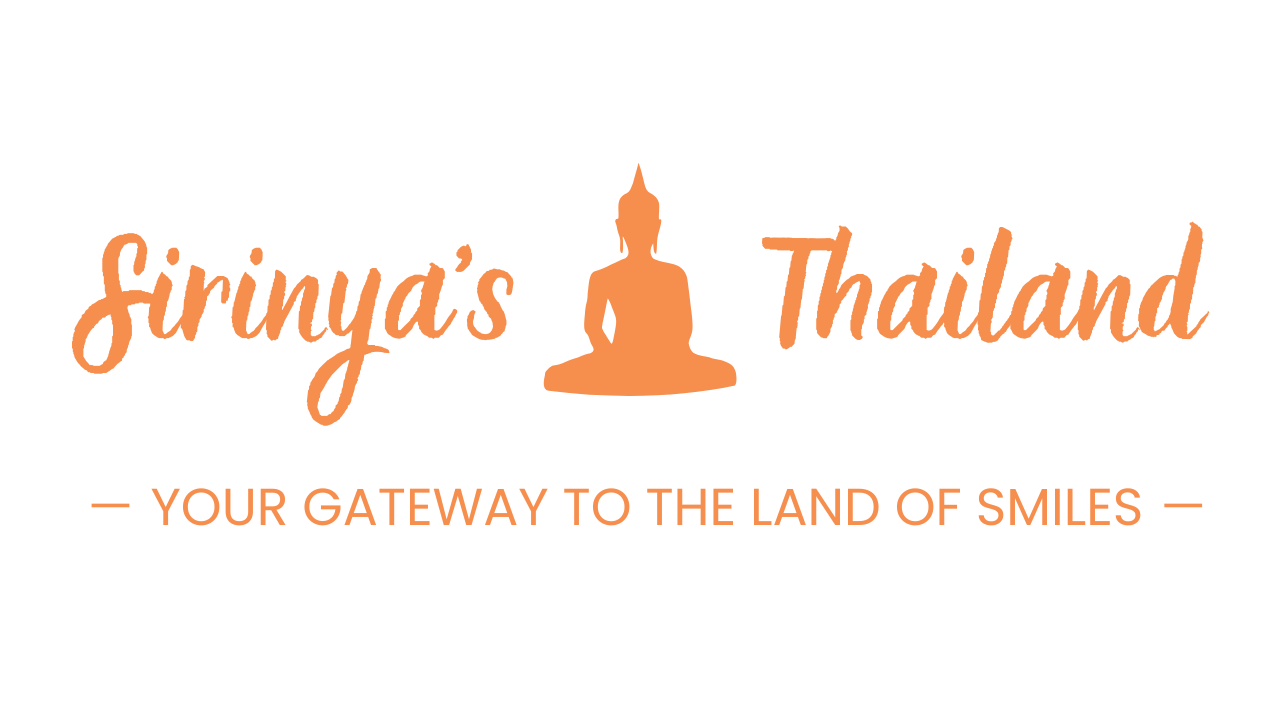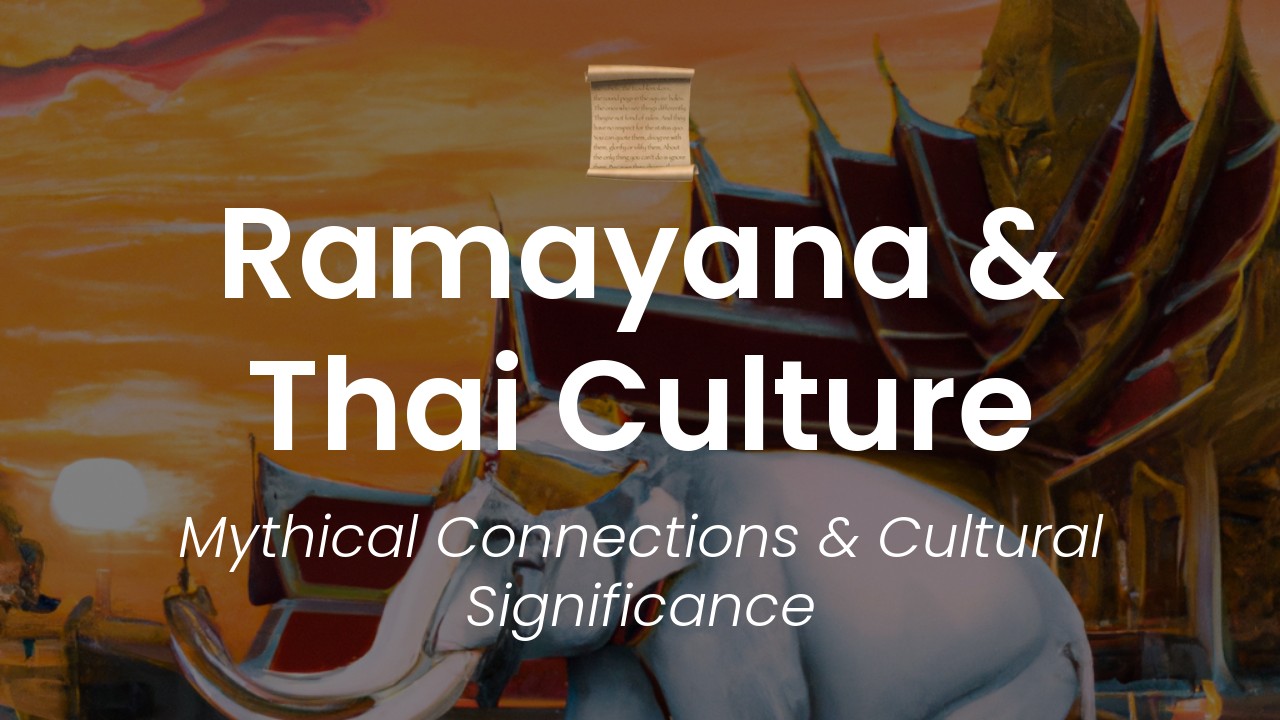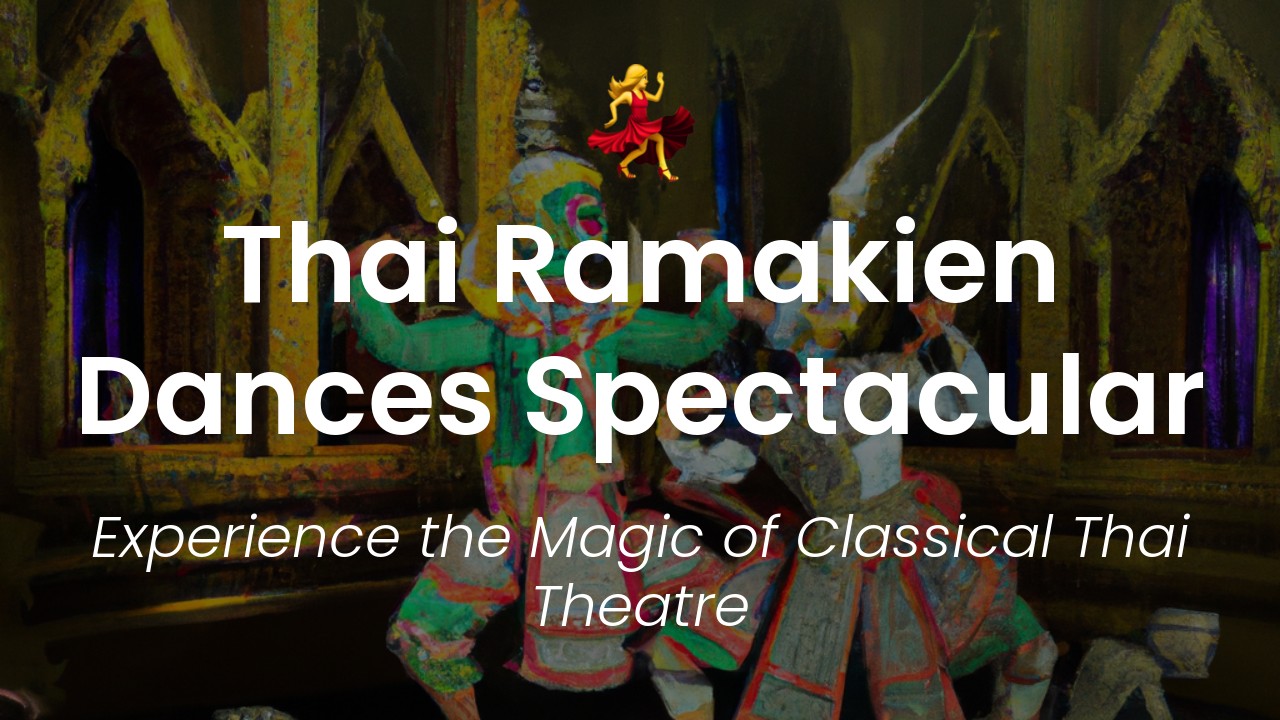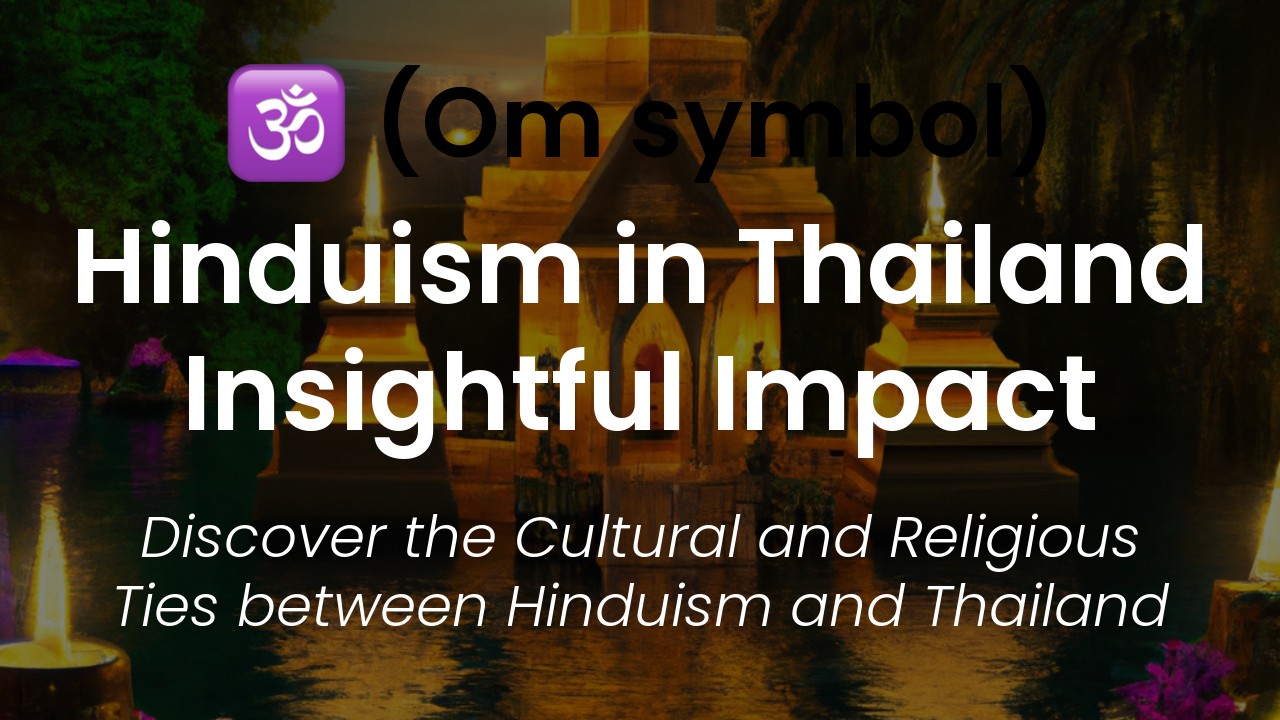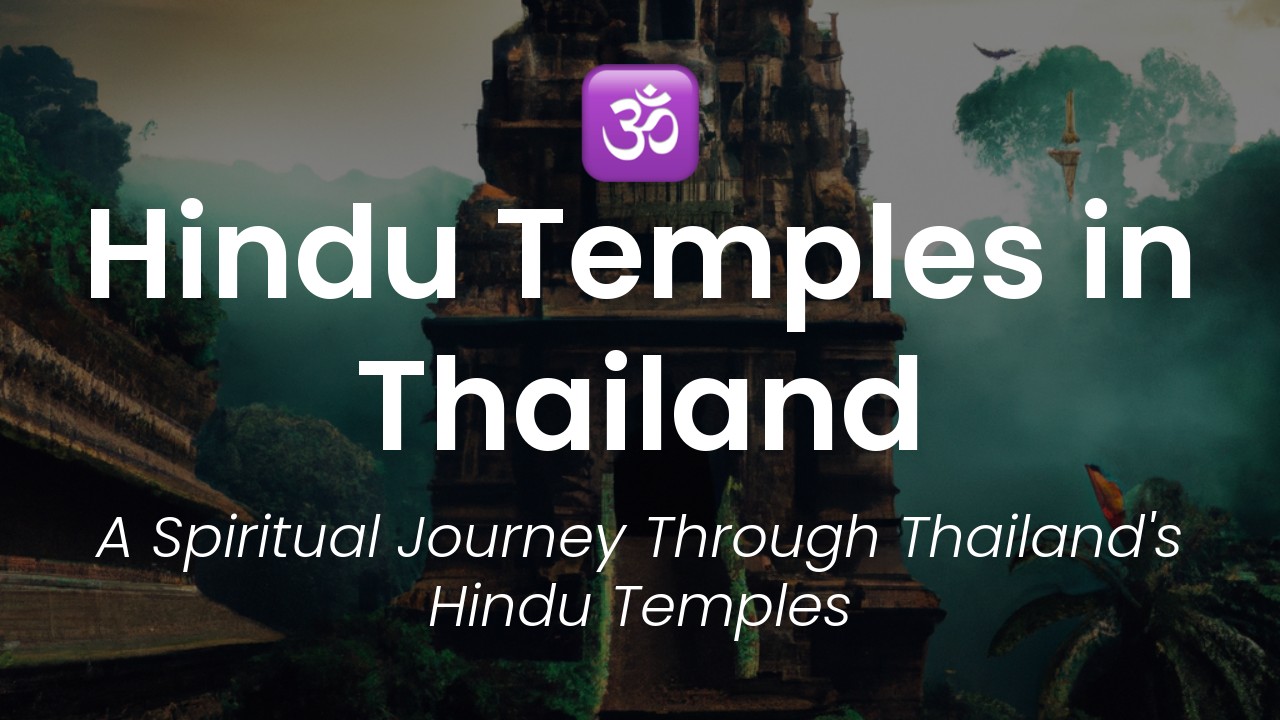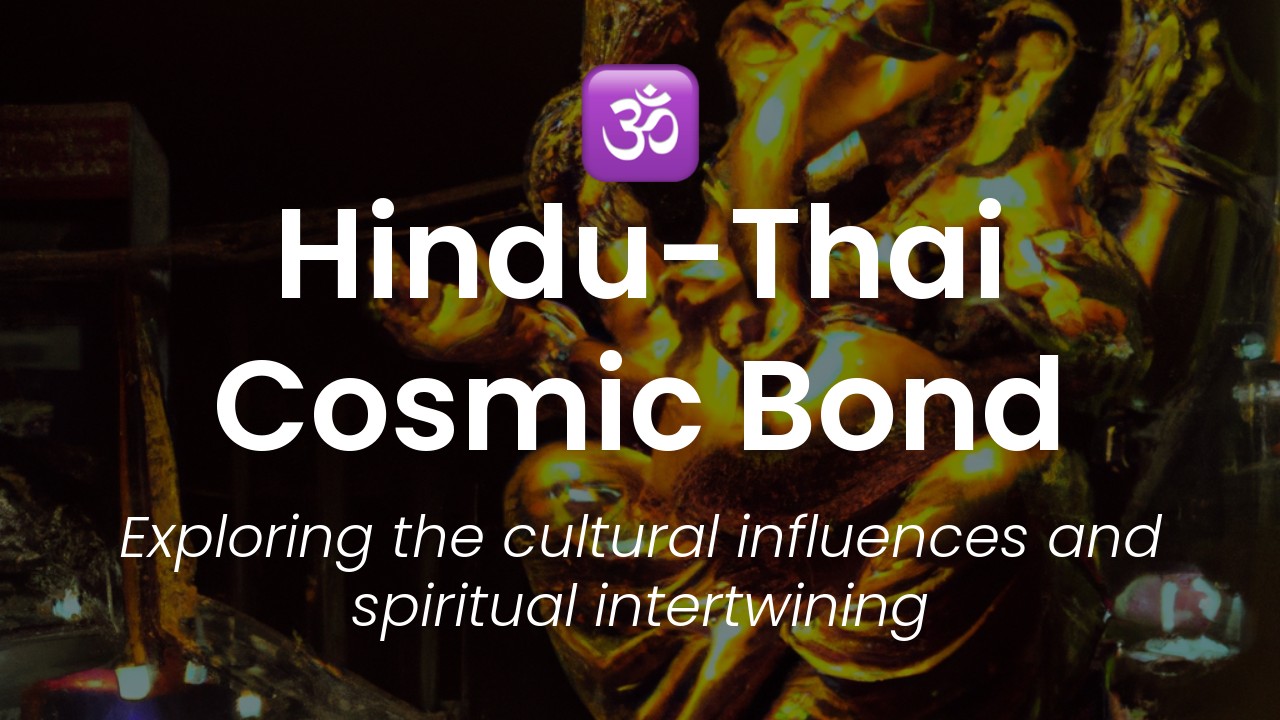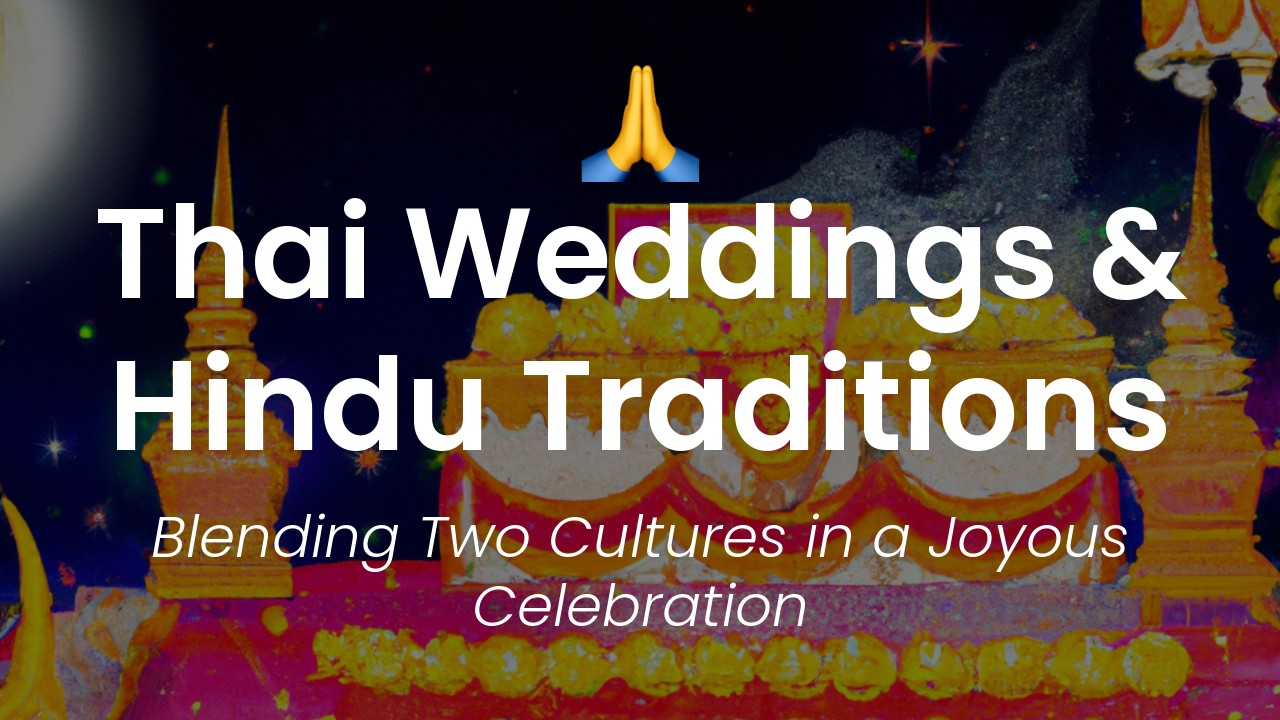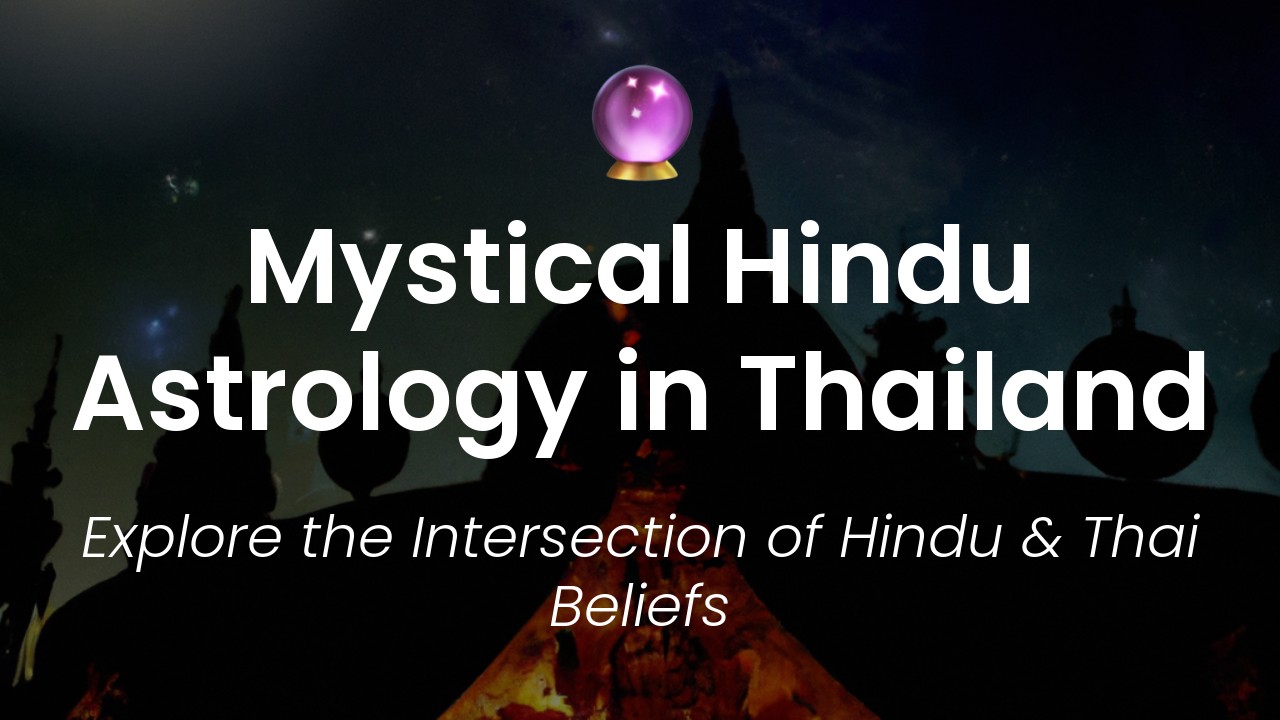Hello there, my fellow cultural enthusiasts! Today, I want to delve into the profound impact of Ramayana on Thai culture. As you might know, Thailand shares a strong cultural bond with India, which can be traced back to ancient times. And one of the most significant influences that India has had on Thai culture is the Hindu epic Ramayana, which has significantly shaped Thai folklore, literature, architecture, and art.
But before we get into the details of how Ramayana shaped Thai culture, let me give you a brief background. Ramayana, also known as the Ramakien in Thailand, is an epic Hindu saga that narrates the story of Lord Rama, his wife Sita, and their battle against the demon king Ravana. The epic has been greatly cherished in India and Southeast Asia for centuries and is considered one of the most important works of classical Indian literature.
The story of Ramakien has been a prominent part of Thai culture ever since it was translated into Thai in the late 18th century. The story was adapted and infused with Thai elements to create a unique narrative, which has become an integral part of Thai folklore. It has influenced various art forms in Thailand, such as classical dance, music, sculpture, and painting, making it an indispensable element of Thai culture. In this article, we will explore Ramayana's influence on Thai culture and discover how it has shaped Thai art, literature, and folklore. So, sit back, relax, and let's dive into the fascinating world of Ramayana and Thai culture!
The Spread of Ramayana in Southeast Asia
The Ramayana is a legendary Hindu epic poem that dates back to ancient India. It tells the story of Lord Rama, a prince who embarks on a quest to rescue his wife Sita from the clutches of the demon king Ravana. Although the story is firmly rooted in Indian culture, its influence has spread far beyond the country's borders.
In particular, the Ramayana has had a profound impact on Southeast Asian culture, including that of Thailand. The poem first made its way to the region via Indian merchants and monks who travelled across the Bay of Bengal to trade and spread their religion. From there, the story was adapted to incorporate local beliefs and customs, eventually taking on a life of its own.
One of the most significant results of this cross-cultural exchange was the creation of the Ramakien, the Thai version of the Ramayana. The story was adapted to reflect Thai values and beliefs, with some characters and plot points receiving notable revisions.
For example, while Rama is depicted as a perfect human in the original version of the poem, the Thai Ramakien portrays him as more flawed and relatable. Additionally, aspects of Thai folklore, such as the Naga, a mythical serpent, were incorporated into the story, further cementing the poem's place in Thai culture.
Influence on Thai Literature and Art
The Ramakien's impact on Thai literature and art is impossible to overstate. The story has served as inspiration for countless writers, poets, and artists over the years, with new adaptations and interpretations emerging on a regular basis.
One notable example of the Ramakien's infusion into Thai art is the Dusit Maha Prasat Throne Hall, which sits within Bangkok's Grand Palace. The throne hall features murals depicting scenes from the epic poem, with each panel carefully crafted to represent a significant moment in the story.
Similarly, the Ramakien has had a significant impact on Thai literature. Countless books have been written about the poem, from academic analyses to modern retellings aimed at younger audiences. It's not hard to see why so many Thai writers have been drawn to the story – its timeless themes of love, sacrifice, and redemption continue to resonate with people of all ages and backgrounds.
The Role of Ramayana in Thai Festivals
Another way in which the Ramakien has embedded itself in Thai culture is through the country's festivals. Many of Thailand's most popular holidays and events incorporate elements of the poem, including the annual Loy Krathong festival.
Loy Krathong is a celebration of the full moon, during which participants release decorative lanterns and small boats crafted from leaves into the river. The ritual is said to be inspired by the Ramakien, with the lanterns and boats representing the flame and raft that help Rama and Sita escape Ravana's clutches.
Similarly, the annual Phi Ta Khon festival in Dan Sai is heavily influenced by the Ramakien. The event features elaborate costumes, parades, and mock battles, with participants donning masks and costumes depicting characters from the poem.
Modern Adaptations and Interpretations of Ramayana in Thai Culture
While the Ramakien remains a beloved and cherished part of Thai culture, it has also undergone significant changes over the years. Many modern adaptations of the story have emerged that put a fresh spin on its timeless themes.
One such example is the 2019 movie "Hanuman: The Great Warrior," a modern retelling of the poem that places a greater emphasis on the character of Hanuman, the monkey god who aids Rama on his quest. The film, which is a collaboration between Thai and Indian filmmakers, combines elements of both cultures to create a unique and visually stunning interpretation of the story.
Similarly, contemporary Thai artists are finding new ways to incorporate the Ramakien into their work. For example, Pattamon Mekavarakul, a visual artist, has created a series of paintings that depict characters from the poem in a modern, urban setting. The works serve as a reminder of the timeless nature of the story, even as society around it continues to evolve and change.
Ramayana in Contemporary Thailand and Its Enduring Influence
Even as Thailand's culture continues to evolve, the Ramakien remains a beloved and entrenched part of the country's identity. From its influence on literature and art to its role in festivals and celebrations, the story's impact can be seen in every corner of Thai society.
Whether introduced to the story as a child or discovering it as an adult, the Ramakien offers a powerful reminder of the enduring nature of storytelling. Its timeless themes and unforgettable characters continue to resonate with people of all ages and backgrounds, serving as a testament to the power of culture to transcend borders and bring people together.
